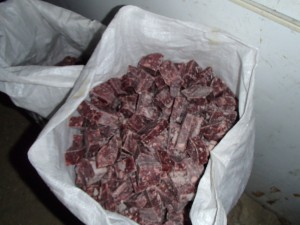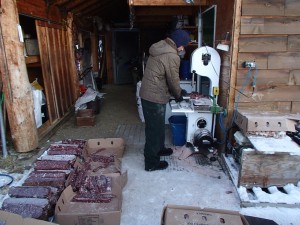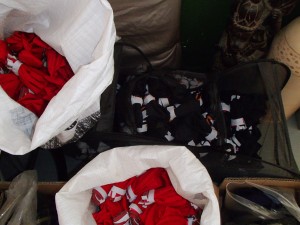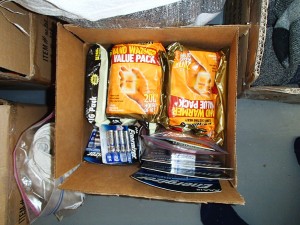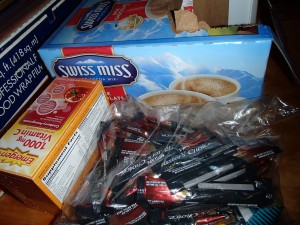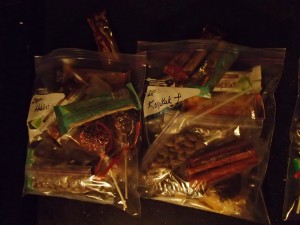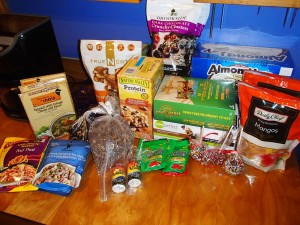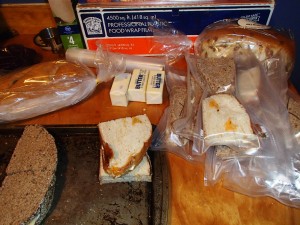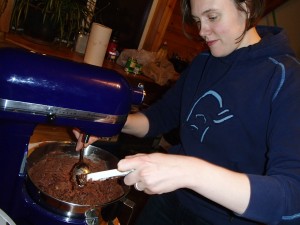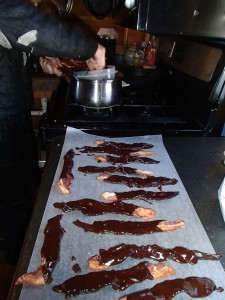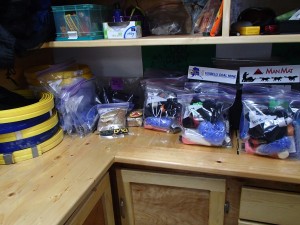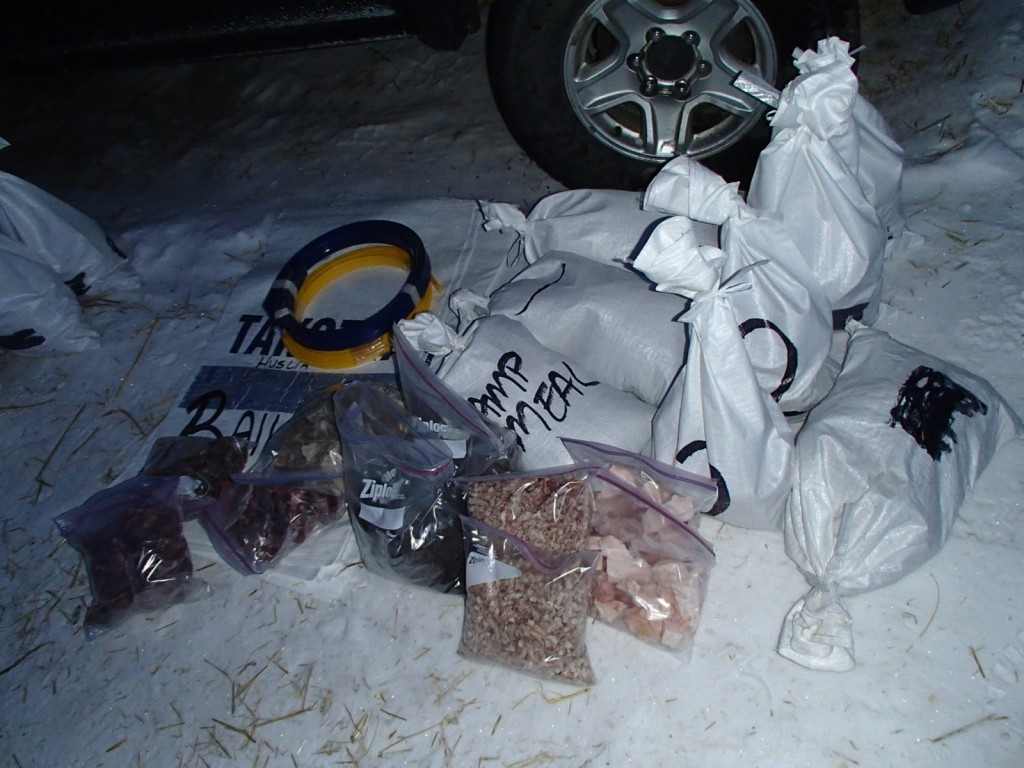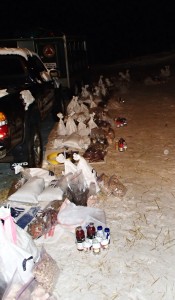…depending on how you look at it.

Lucky the Squirrel was supervising much of my drop bag preparations,as I counted and measured and talked to myself; thinking out loud to check all my calculations. I think he thinks I am nuts.
Lately my head has been swimming in numbers. Which usually leaves me thinking, “why didn’t I work harder to study math when I was in school?” Really to all the young mushers out there who want to know what they can do to prepare themselves for Iditarod – Study Math. Make it your friend! Because to quote W. E. B. Du Bois, “When you have mastered numbers, you will in fact no longer be reading numbers, any more than you read words when reading books You will be reading meanings.“
I however have not reached that level, so as we continue on with this post let me quote comedian Steven Wright, “I’m writing a book. I’ve got the page numbers done.”
Today I took a major step toward writing what will be this years installment of that adventure epic – Iditarod 2015 – by turning in 1812 pounds of dog food, meat, gear, human food, and necessary items. Yes 1812 POUNDS sent out along the way, and that is just one of the numbers I will be sharing with y’all in this post. For those of you who speak the language of numbers I hope this will add to your appreciation of what really goes into running this great race. For the rest of us, these numbers may just help illustrate the head spinning, time consuming, planning and preparations that your average musher goes through as they number the pages and start writing the book. And once again to my young mushing friends out there, study math! For reals, because drop bag math is actually the easy part; just wait till you try to decipher run/rest schedules, estimate run times, and make race plans!!!
In past posts I have talked about what goes into drop bags – Anatomy of Drop Bags. As well as the cost of what goes into them – Gearing up to Pack it in. Today for fun, we focus on the numbers.
50 bags in total, none weighing more then 50 pounds as per Iditarod Rule #47. yes there is a section in the rules dedicated to food drops and logistics, it is That important. Bags come labeled and color coded with the checkpoint name, and then mushers label them as well.
This year I sent out just over 450 pounds of kibble! All pre-bagged into meals and snacks. Extra meals are sent to every checkpoint, just in case. Anyone who has followed this race for any amount of time knows that Mother Nature calls the shots and I have to be prepared so I can be sure my team will be well fed and cared for.
Over 550 pounds of meat, both beef and tripe, were cut either as snacks for the trail or into smaller chunks to make meaty drinks for the dogs. An additional 200 pounds of beef fat was ground up and sealed in gallon bags to be added to either drinks or meals as needed on the race. And 40 salmon were sliced into lovely* trail snacks for the dogs. *Lovely by dog standards, personally I prefer smoked salmon strips for my trail snacks, and yes I have 1.5 pounds of them sent out for me.
Cut meat and fish trail snacks got packed into reusable poly bags this year. As did our kibble meals. These reusable bags are our small attempt at being more environmentally friendly. As I will be able to send them back home in my return bags and use them for training and future races. We bought (and used almost all of) 100 poly bags. However we also feed wet snacks on the trail, and for those we still need to use plastic ziplock bags. In addition some of the human food and gear need to be protected from moisture. So all in all we probably used an estimated 150-200 plastic freezer bags, various sizes. Interesting side note, the freezer bags have a plastic additive that ensure they do not get as brittle or crack as easily as the regular bags, which is definitely something you want for drop bags.
And what else you ask… here are some of the other important supplies that got packed up and turned in today:
Booties!!! Sent out in four packs 18 to a set. Because we have not finalized our race team line-up the sets of booties include a few additional pairs so that we can accommodate whoever ends up running with me on the Iditarod trail. Dogs booties get changed for every run, as well as if they get wet or worn. For the race I sent out 25 sets of booties.
Cotton glove liners; 80 pairs. By changing into new ones as soon as they get damp or used I ensure my hands are always dry, and that is a major way to keep them warm inside my mitts. 12 pairs of socks, and 16 fleece neck gators are also sent out so I can change into fresh ones along the way. And I also sent 8 pairs of work gloves, the ones I use to do my camp chores, in case I need to replace them or want new dry gloves at a checkpoint.
And in addition to changing my glove liners often, I also send out chemical heat packs, 100 chemical heat packs to be exact.
And I will also carry (since regulations do not allow us to send them out in drop bags) 30 lithium batteries to power the headlamp I wear. And speaking of power…
24 5 hour energy drinks, along with 32 packets of instant coffee, another 30+ packets of coco, and 30 packets of EmergenC drink all got sent out for me to enjoy on the trail.
Each checkpoint got at least a 1 gallon bag full of trail snacks! I will be enjoying wasabi nuts, various power bars, cake pops, dried fruit, and some candy. I will also be enjoying Erin’s homemade muffins and Dan’s signature chocolate bacon on the Iditarod! More substantial food for mealtime is sent as well. I like to take nice bread, sliced, buttered, and vacuum sealed in my bags. It defrosts quickly in boiling water (like my dog food cooker while I make water for the dogs on the trail) or pop it out of the bag and warm it on a fire. I sent out 4 loaves of bread this year: cinnamon swirl, white chocolate chip & cherry, cheddar garlic, and whole grain with nuts and seeds. I also have 2 pizzas, packaged by the slice sent out to enjoy along the trail.
I send dog care supplies out as well, so there were 18 bottles of dog massage oil, and 10 tubes of foot ointment. In addition I made 20 individual supplement packs to add to the dogs meals. I also send out new runner plastic for my sled, so I can change it out if it gets worn or the conditions change. This year I sent out 12 sets of plastic. I may not end up needing or using all of this. But since mushers are limited to what they have sent out in advance I want to make sure I have it if I need it.
You can really start to see how all this adds up!!!
Once all the things are amassed and organized I lay out the drop bags in order and then pile up the gear and food for each checkpoint. This allows me to double visualize my race, what I will need, and double check what I have packed based on my race plans. It is a long process, but being able to see everything laid out really helps me make sure I am packing as much of everything I will need to get me from Fairbanks to Nome.
Next step, everything gets packed into bags by checkpoint. Then the bags are sealed and weighed.
And lastly loaded into the truck so they can be brought to town and turned it.
Which is of course, followed by a HUGE sigh of relief!!! My pages are numbered, and it is time to move on to writing the novel.
And for a very teeny tiny moment I can forget about math… that is until it is time to start thinking about run times, mileages, run /rest ratios, figuring traveling speed…
And then once again I wish I was better at math!!!



